Abstract
Health departments and community-based organizations across the United States are funded by the Centers for Disease Control and Prevention to conduct street outreach to facilitate risk reduction among a variety of hard-to-reach populations who are at risk for human immunodeficiency virus infection and other sexually transmitted diseases. The interaction between the client and outreach worker is the fundamental element of any street outreach activity. However, little has been written about the relationships that develop on the street between workers and clients to promote, support, and sustain behavior change. This paper describes two types of interactions that occur in street outreach intervention activities: the contact and the encounter. As part of a comprehensive evaluation of street outreach, interactions between workers and clients were described and analyzed during the formative phase of the AIDS Evaluation of Street Outreach Projects. For purposes of the evaluation, a contact was defined as a face-to-face interaction during which materials and/or information are exchanged between an outreach worker and a client (or small group of clients). An encounter was defined as a face-to-face interaction between a worker and client going beyond the contact to include individual assessment, specific service delivery in response to the client's identified need(s), and a planned follow-up. The contact provides a means to initiate interaction with potential clients in the community. It is the encounter that provides more significant opportunity for helping the client initiate and sustain behavior change. The discussion suggests techniques for enhancing the encounter between outreach workers and clients using the conceptual framework of the social work helping relationship. Five elements of the encounter are defined and developed: screening, engagement, assessment, service delivery, and follow-up. The encounter represents an enhancement of the traditional street outreach interaction and a more systematic approach to promoting the behavioral change goals of the AIDS Evaluation of Street Outreach Projects. Recommendations are suggested for implementing the encounter in street outreach programs serving hard-to-reach populations.
Full text
PDF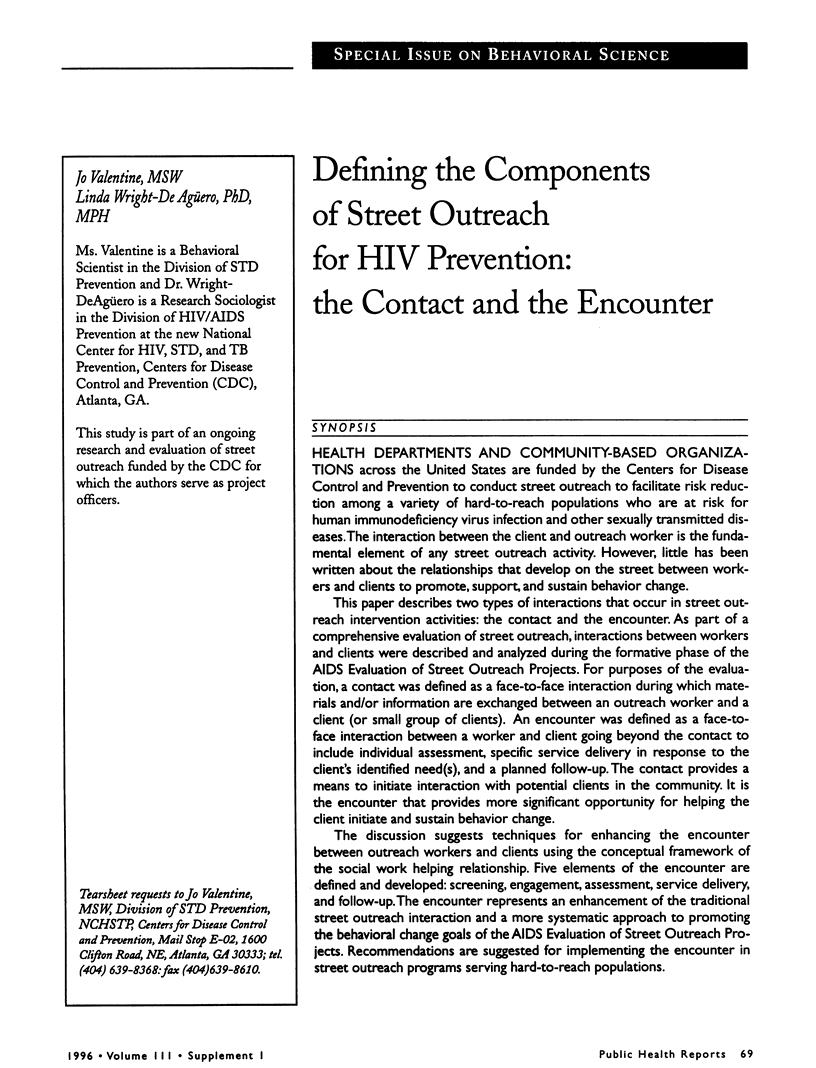
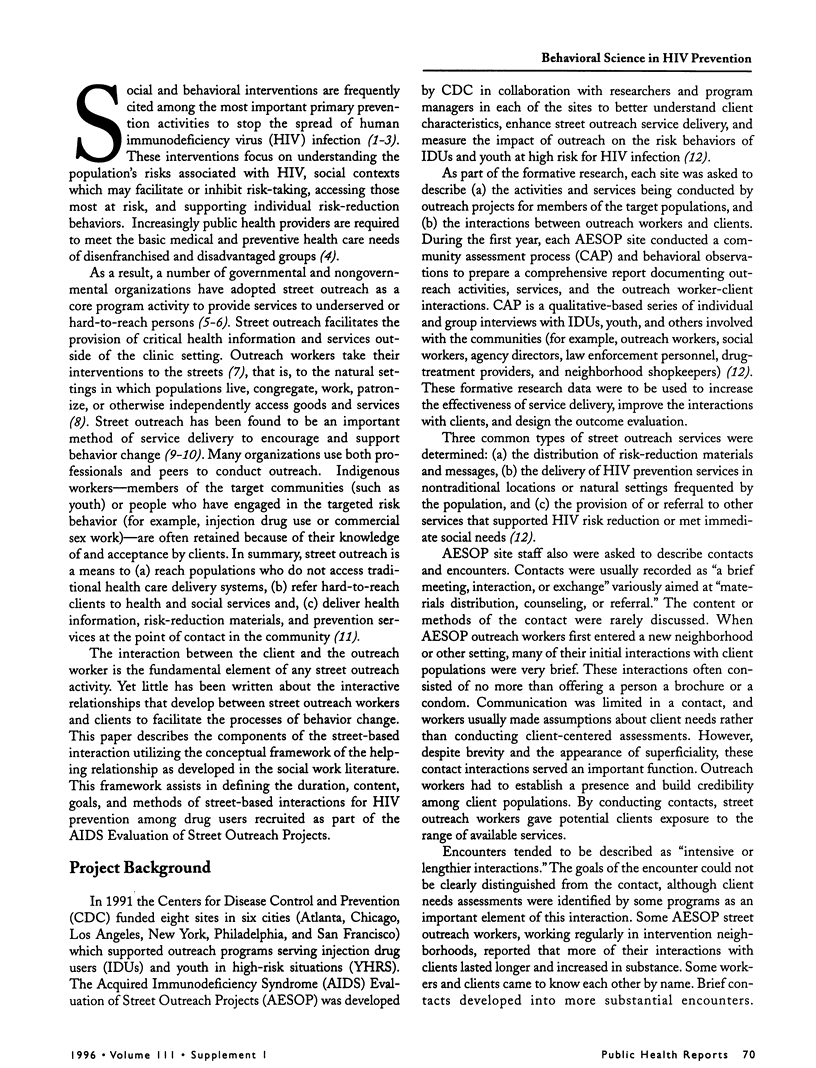

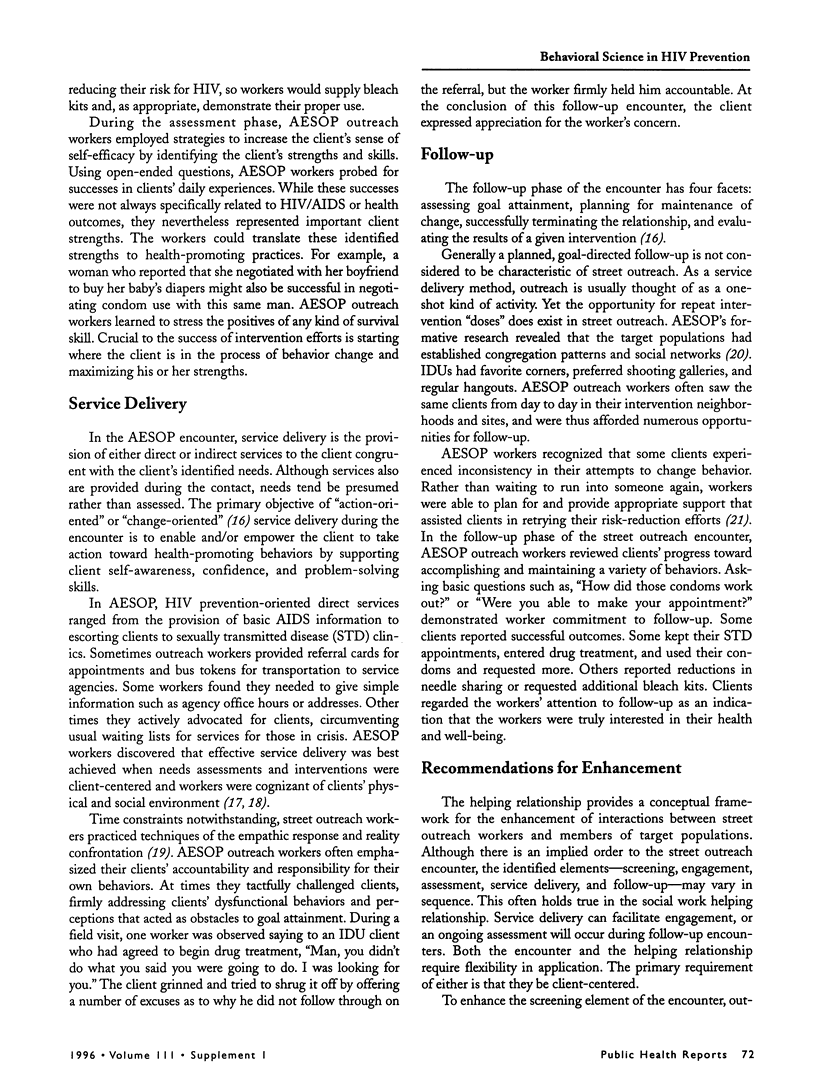
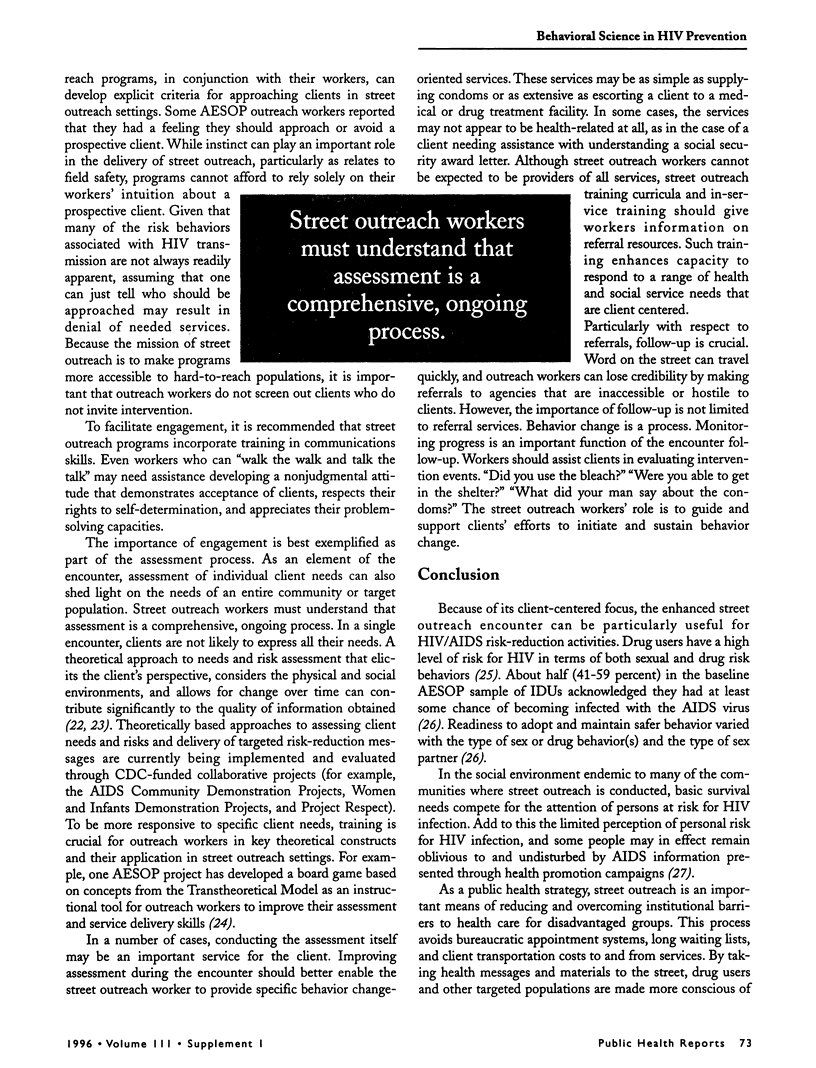
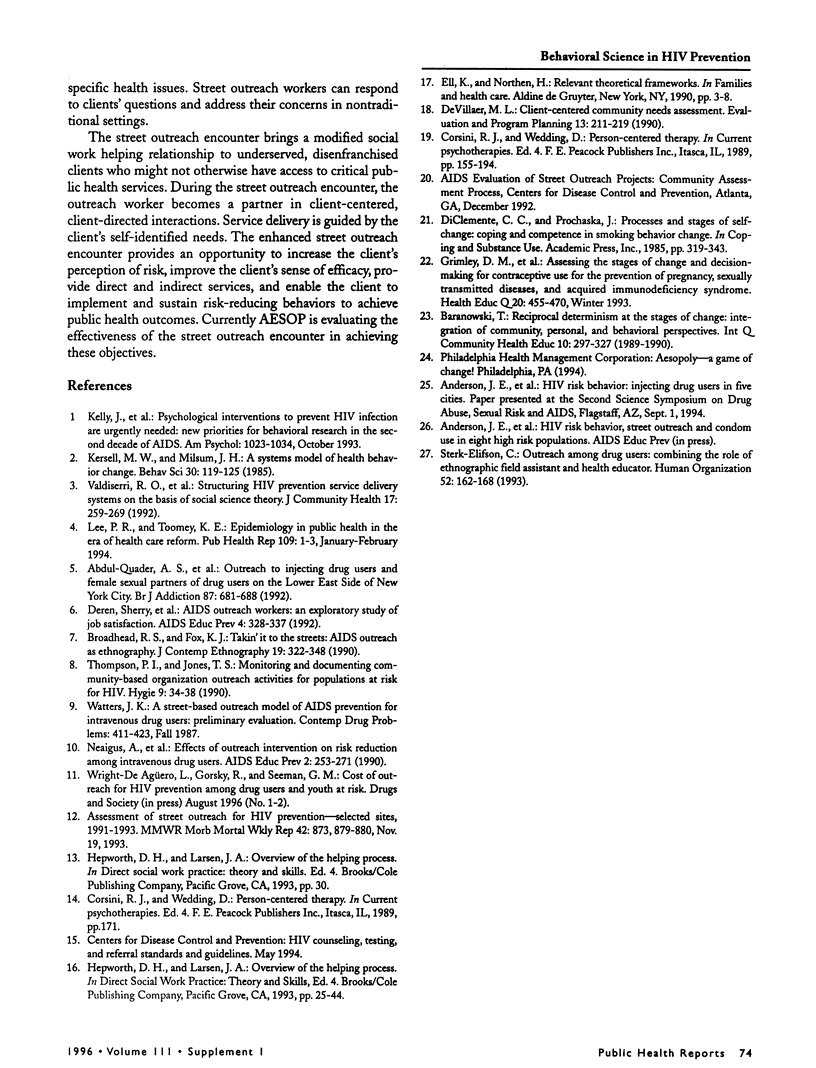
Selected References
These references are in PubMed. This may not be the complete list of references from this article.
- Abdul-Quader A. S., Des Jarlais D. C., Tross S., McCoy E., Morales G., Velez I. Outreach to injecting drug users and female sexual partners of drug users on the lower east side of New York City. Br J Addict. 1992 May;87(5):681–688. doi: 10.1111/j.1360-0443.1992.tb02713.x. [DOI] [PubMed] [Google Scholar]
- Deren S., Davis W. R., Tortu S., Friedman S., Tross S., Sufian M., Pascal J., Stull C. AIDS outreach workers: an exploratory study of job satisfactions/dissatisfactions. AIDS Educ Prev. 1992 Winter;4(4):328–337. [PubMed] [Google Scholar]
- Kersell M. W., Milsum J. H. A systems model of health behavior change. Behav Sci. 1985 Jul;30(3):119–126. doi: 10.1002/bs.3830300302. [DOI] [PubMed] [Google Scholar]
- Neaigus A., Sufian M., Friedman S. R., Goldsmith D. S., Stepherson B., Mota P., Pascal J., Des Jarlais D. C. Effects of outreach intervention on risk reduction among intravenous drug users. AIDS Educ Prev. 1990 Winter;2(4):253–271. [PubMed] [Google Scholar]
- Thompson P. I., Jones T. S. Monitoring and documenting community-based organization outreach activities for populations at risk for HIV. Hygie. 1990 Dec;9(4):34–38. [PubMed] [Google Scholar]
- Valdiserri R. O., West G. R., Moore M., Darrow W. W., Hinman A. R. Structuring HIV prevention service delivery systems on the basis of social science theory. J Community Health. 1992 Oct;17(5):259–269. doi: 10.1007/BF01324356. [DOI] [PubMed] [Google Scholar]


